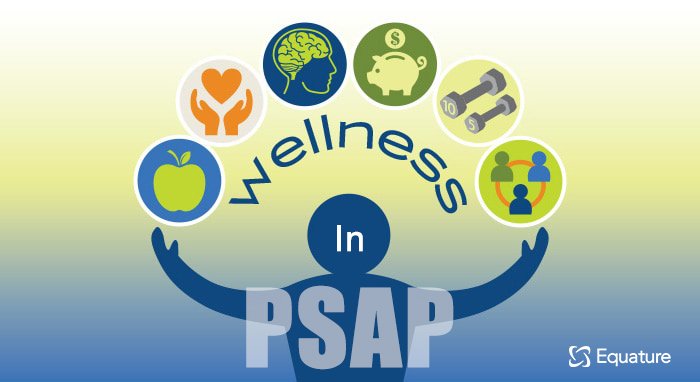Wellness in the PSAP is gaining in importance throughout the industry. There are two different types of wellness programs primarily implemented, one is supported wellness the other is physical wellness. Throughout the relatively short history of 911, PSAP personnel has been categorized as clerical because often the administrative paperwork portion of a 911 center and the first responder agencies they served, was given to the dispatcher to complete. With the complexity of technology and the increasing demands put on a 911 Telecommunicator, many agencies find themselves shifting the administrative duties away from personnel who are responsible for answering life or death calls for service and for those under the headset, who is responsible for the direct life-line between the first responders and additional resources. The calls for wellness programs in the PSAP have risen out of the need to assist personnel with duty-related traumatic calls and events, and challenging coping methods. In 2019 the Journal of Emergency Medicine reported that PTSD (Post Traumatic Stress Disorder) was between 18% and 24% for 911 personnel. The expected level of burnout, depression and anxiety were on the rise and adversely affecting job and life satisfaction. Add this with the imbalance between home and work along while some attempt to self-medicate as a coping mechanism, all increase the job-related stressors and overall health of the individual.
Identification of the need to address wellness was a positive, significant step in the identification of what the first – first responders do each day. Whether it’s taking call-after-call of people truly having the worst day of their lives and then sending those calls out to first responders who are short-staffed, maybe short-tempered, and the headset gets the brunt. Or it could be the days when the PSAP has hours of sheer boredom, punctuated by moments of sheer terror. This last phrase, one that I have used many times in the last 27 years of my career, was used after being in a small one-person PSAP, one call at a time until a fire, drowning, accident, any visible event taking place at a large scale. It’s those moments that one (or maybe two) people must suddenly spring into action dispatching multiple agencies and answering multiple phone calls. No matter what the PSAP atmosphere is, there is stress, and the acknowledgment of that stress and how each person handles it is a major accomplishment. A wellness program can identify stress or it may be there to help personnel become or stay healthy.
Support or Peer Wellness program is put in place to help identify and support the PSAP personnel as they go through their career. Peer support, by definitions provided in the NENA standards document, is assistance provided by a person who shares a commonality with another based on a similar event or situation. The most basic level of peer support can be found within the culture of an organization through the daily interactions between co-workers. A peer support team is designed to come alongside a person experiencing distress, however, there are many different levels a support team could be at. One level is when a peer support team is trained to be observant and watch for a distressing event in a peer in order to listen to their peer and refer them on to more advanced counseling, such as an EAP (Employee Assistance Program).
There are also Support teams who have advanced training, specifically in crisis intervention and the identification of short-term crises. They are able to listen to the problems in detail, help their peers find solutions, and make referrals for them to advanced services.
Either of these programs may have additional enhancement of a support group or a family support unit. While these programs may be led by a professional intervention specialist, they are most often led by trained peers. To be effective, peer support teams must be defined and developed by the organization.
The other type of support is a physical wellness program. These programs can be developed many times with the assistance of the agency’s insurance carrier. They promote and reward healthy lifestyle activities such as exercise, smoking cessation, weight loss, and better eating and healthy choices. PSAPs can encourage healthier choices by having adjustable equipment so their telecommunicators can stand during their shift. There are also stationary “bikes” and “treadmills” on the market for those who like to move during the shift but are unable to have a place available to do so. It is important for agencies to make sure the employee provides proof that it’s okay to enter into an exercise program. While physical wellness programs can be very basic in nature, they are, as are the Peer Support programs, capable of starting small and expanding into a greater depth.
No matter what type of wellness support an agency may be interested in, there are a variety of documents for PSAPs to adopt that will benefit the culture of their center. The first step is the hardest, but the movement of taking the step is always better than the alternative of stagnation.
The NENA Wellness Standards Best Practices document may be found at ENA 01-002 (ymaws.com)


Recent Comments